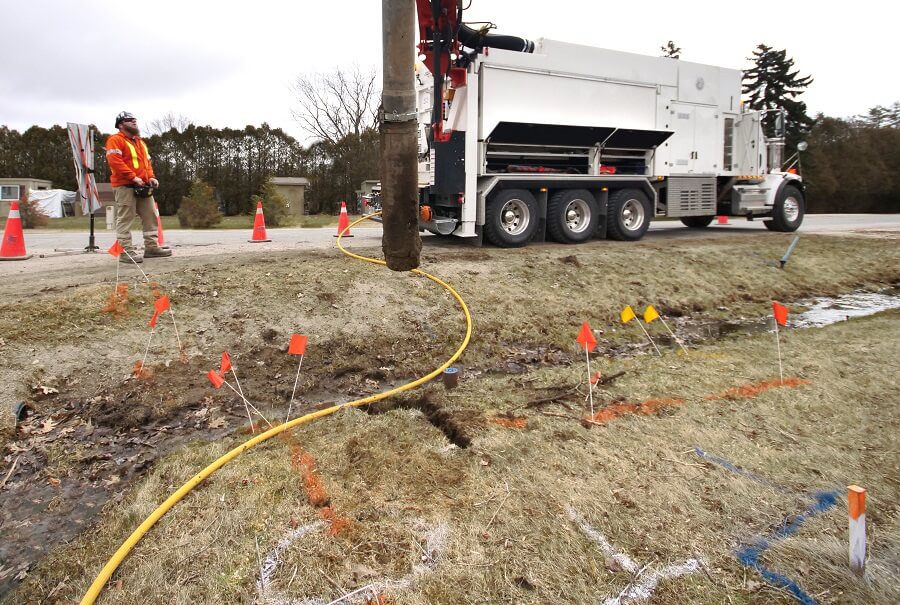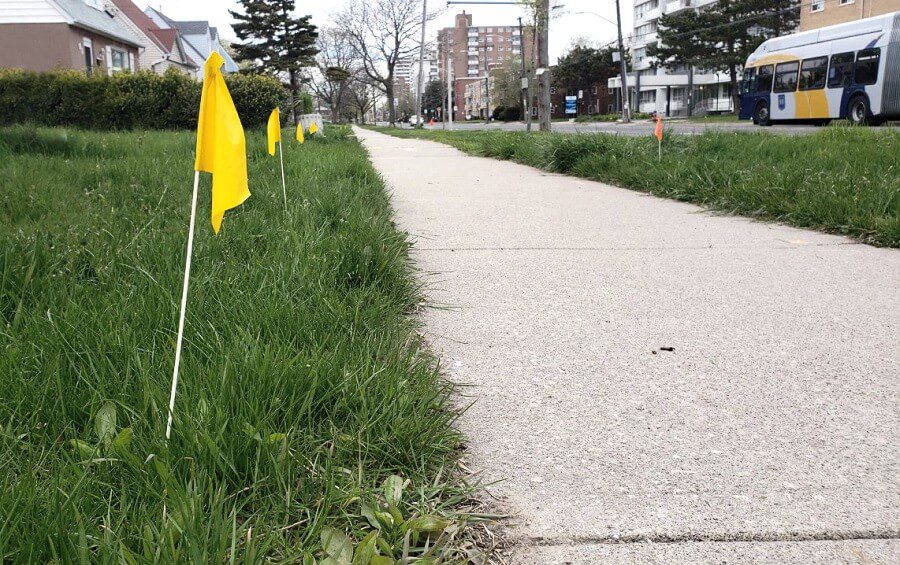Before we can complete a hydro vac excavation, or dry suction excavation on your property, we need to know where underground utilities are located. Without locates, damage to utilities and your surroundings, plus injury to yourself and others, can occur. Here’s what you should know about getting a locate completed.
The Purpose of Locates
Used to identify the position of utility lines, locates are ground markings that represent buried cables, pipes, and wires. These can include infrastructure related to electrical, gas/oil/steam, communication, water, sewer/storm, and irrigation/slurry.
When the location of the buried infrastructure is known, digging can be safely completed without the risk of injury or damage.
The Legality Behind Locates
Utility companies own the underground infrastructure – even on private property.
If an excavation occurs without a locate being completed, there could be consequences involving utility damage that results in expensive restoration costs, severe injury to yourself and others, and even legal action.
Traditional Locates
Requesting a locate is a fast, easy process. Before digging, contact Ontario One Call and provide information related to the upcoming project. The type of work, maximum depth, method of digging, and other details will be requested.
Following your request, a utility company typically completes a locate within five days. They will mark (locate) your digging area with coloured markings that represent different utilities. After buried infrastructure companies have cleared a property for digging, locates are valid for 30 days. If an excavation project exceeds 30 days, an additional request for an on-site locate will need to be completed.
While completing excavation work on a property, the marks placed during the locate need to be respected. Each infrastructure company involved provides specific instructions that must be followed.

Alternate Locate Agreements and Hydrovac Excavation
Hydrovac excavation and Dry Vac Excavation are both very efficient methods to vacuum up dirt and material. They are known as the safest and most effective digging methods for “soft digging”, the material extracted can be transported of your project area or properly managed for reuse.
Compared to traditional manual or machine excavation, both vacuum extraction methods are non-destructive ways to excavate clay, sand, ice, and gravel. Utilized for a wide variety of applications, including digging near underground infrastructure.
Even though vacuum excavation is an extremely safe digging method, locates are still required before any excavating is permitted. In special circumstances, traditional field locates are not needed. Instead, an Alternate Locate Agreement (ALA) can be used to safely proceed without a traditional on site locate. The ALA outlines specific methods and procedures that must be adhered to and includes termination, insurance, and legal liability clauses.
Both the utility plant owner and the excavator benefit from an ALA. Since the number of unnecessary locate requests are reduced, the locate service provider (LSP) cost substantially decreases. Plus, the intended construction work can be done quicker and more efficiently.
Want more information about vacuum excavation? Contact our team today.


